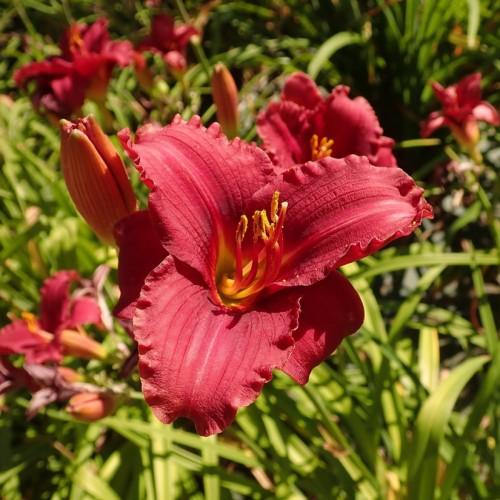
daylily
Hemerocallis 'Everblooming Doll'
Cycle:
Herbaceous Perennial
Watering:
Average
Hardiness Zone:
3 - 9
Flowers:
Flowers
Sun:
Full sun,part shade
Leaf:
Yes
Growth Rate:
Low
Maintenance:
Low
Care Level:
Medium
watering
Daylilies (Hemerocallis 'Everblooming Doll') should be watered consistently. During the summer, the plants should be watered at least once a week. During the hot summer months, water the plants 2 to 3 times a week. In the winter, water the plants less often - once every 2 weeks. The amount of water should depend on the amount of rain fall - if it is a dry period, be sure to water the plants more often. When watering the plants, be sure to water the soil, not the leaves. Apply enough water to thoroughly soak the roots and surrounding soil.
sunlight
Daylilies (Hemerocallis 'Everblooming Doll') prefer a minimum of 5-6 hours of direct sunlight each day to produce the best floral quality and quantity. This can vary slightly based on location and climate, however most Hemerocallis cultivars will perform best in quality and quantity of blooms with at least 5-6 hours of direct sunlight. For areas with hotter climates, it is best to provide some additional shade in the afternoon to protect the plant from the intense sunlight. If the climate is cooler, the daylily can tolerate more sunlight, but no more than 8-10 hours is recommended. Morning sun is ideal for providing the right amount of sunlight while still protecting the plant from the hottest parts of the day.
pruning
Daylilies (Hemerocallis 'Everblooming Doll') can be pruned anytime from late spring to mid summer. The best time to prune them is in the early morning after they have had a chance to dry off from morning dew. As with any pruning, it is best to prune no more than 1 third of the plant at a time. Start by removing any spent flower stems, then remove any dead or diseased stems that have lost their foliage. This helps open up the plant so more new shoots can grow. Do not prune through the heart of the plant; instead, focus your pruning on the outer edges. After pruning, mulch around the plant to help keep the roots cool and moist during a hot summer.
